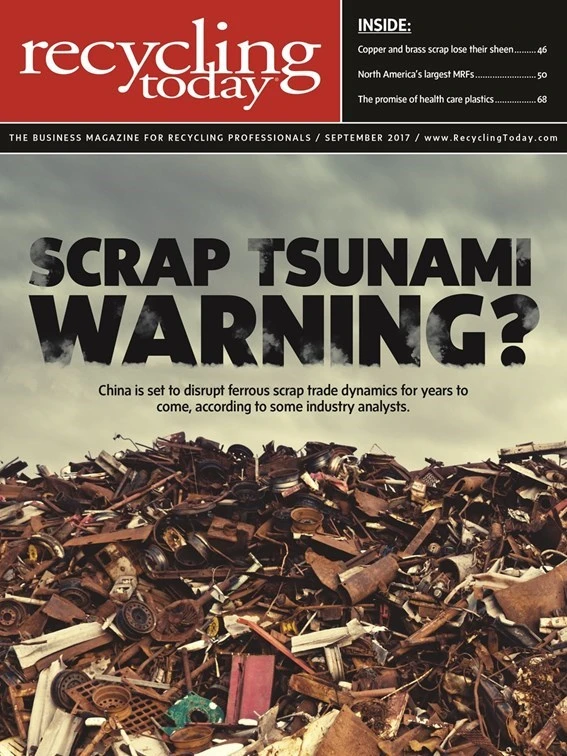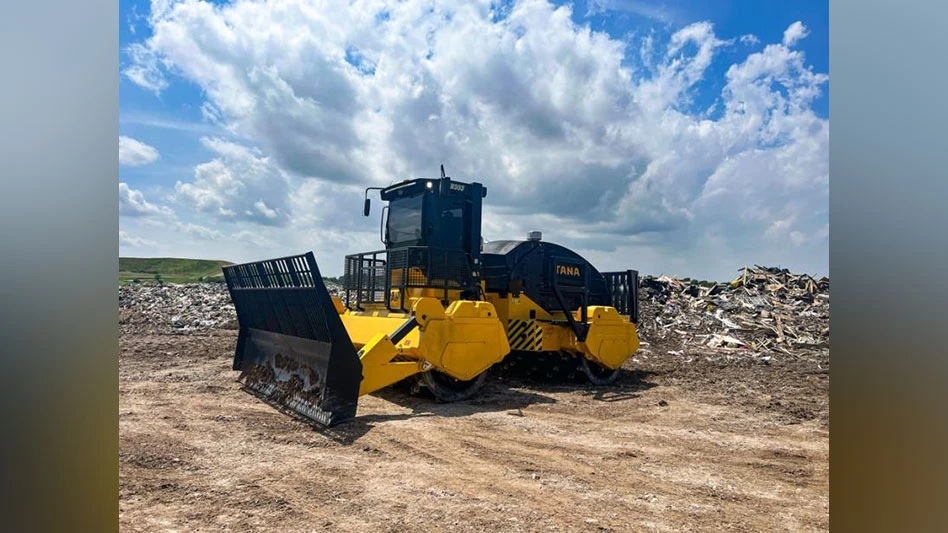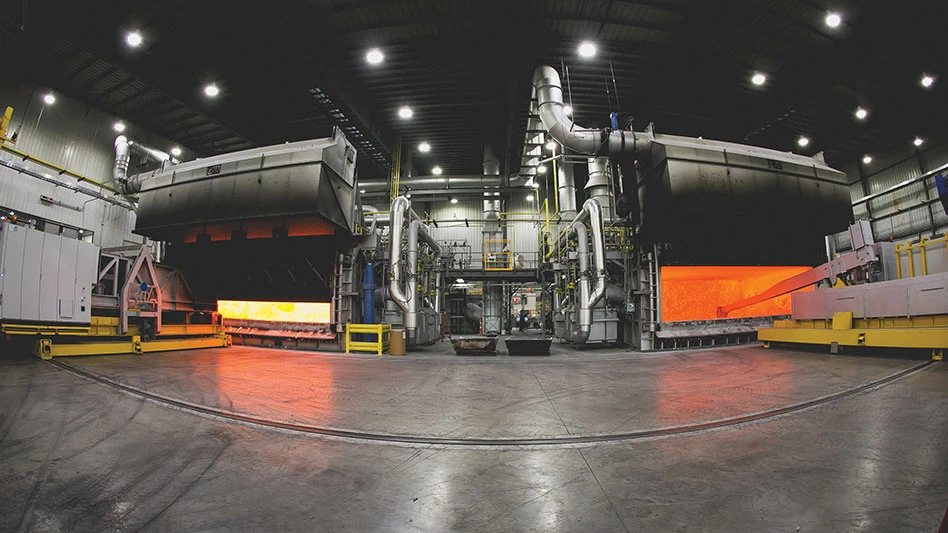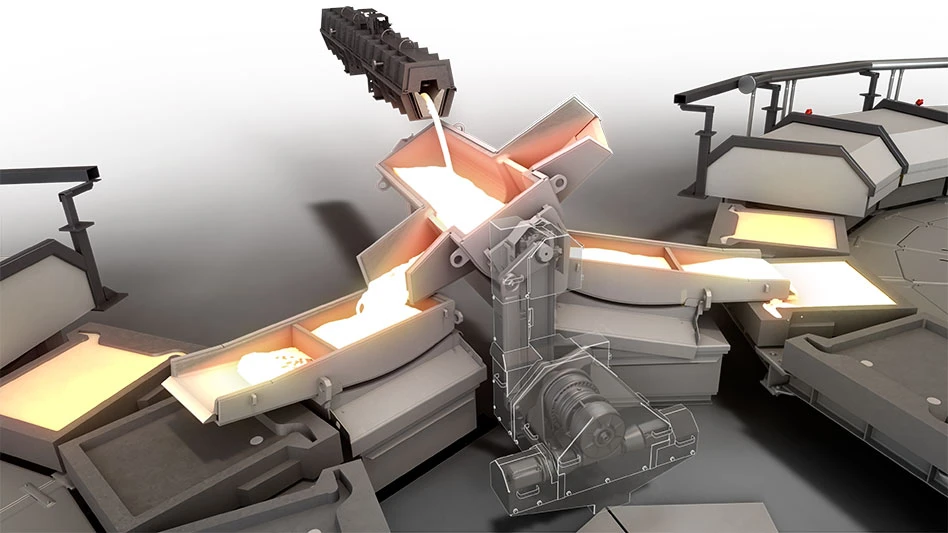
At the beginning of the summer season, copper and brass scrap markets began to favor sellers of the material; however, as of mid-August, this no longer appears to be the case.
The shift in part, according to sources, is the result of high inventory levels at domestic consuming mills and softer demand for their products. And then there’s the situation in China, which has proposed a ban
No longer a seller’s market
Matthew Heitmeier, vice president of metals at scrap processing firm Padnos of Holland, Michigan, says “in general demand did pick up” for copper and brass scrap earlier this summer “due to some buyers/consumers seeking copper units when earlier in the year they had plenty of
However, this pickup in scrap demand appears to have been short-lived. “Demand is soft right now,” says Michael Eisner of brokerage firm Premier Metal Services in Chagrin Falls, Ohio. He describes orders from domestic consumers as “soft,” adding, “There is no indication that things might change right now.”

Eisner continues, “There is metal everywhere right now.”
Randy Goodman of scrap brokerage firm Greenland (America) Inc., based in Atlanta, describes domestic generation as having been good since late winter, while Heitmeier points to reduced generation from the commercial construction market.
“There are definitely
Despite the current availability of brass and copper scrap, domestic consumers are reducing their scrap inventories, Eisner says. “I don’t know if it is demand changes or inventory valuation changes that are driving the inability to deliver metal to the mills,” he adds.
“What generally happens with something like this is that mill returns increase and
Goodman says spreads have widened for copper and brass scrap. Referring to the run-up in copper scrap prices seen earlier this summer, he says, “With this huge of a move up, everyone got excited, and those that did not sell into it missed some of their opportunity.”
However, Goodman adds, “It doesn’t matter what the spread is,
Despite the sluggish domestic demand and the difficulty moving some low-grade materials, Goodman says, “We’re buying. Honey (yellow brass scrap) is not a problem for us to place at all. No. 2 [copper] is not a problem for us to place [in the] export [market]. We are definitely buying brass and No. 2 all day long.”
He adds that the brass Greenland (America) is selling is being shipped to India and to China.
“We’ve never been a huge [supplier] of No. 1 [copper], but we don’t have any problems placing it. But, people have to get used to the new spreads,” Goodman says of red metal scrap prices overall. “By the time they are used to the new spreads, then the market is filling up.”
Export activity
When it comes to export markets for red metal scrap, “It’s all about China right now,” Goodman says.
He describes export buying of high-grade copper and brass scrap as “good.” Goodman adds, “Anything that is destined for
Regarding China’s National Sword initiative and its proposed ban on Category 7 scrap materials, such as discarded motors and plastic-coated wire and cable, he says, “Anything that is a recovery item of brass or copper—anything that has to be processed to get the copper units out—is under serious fire right now.”
While such a ban has not yet been enacted, sources say customs officials and ports in China are behaving as if it has.
“Even though the announcement hasn’t been made official, the ports and the customs officers have already started to react,” Goodman says. “That reaction has caused either their pricing to come down significantly because their charges have gone up significantly, or they are just not buying.”
Goodman continues, “It doesn’t matter what the intrinsics are right now; the customs duties in China have doubled and tripled, and people are pulling away from that market.”
Heitmeier says that with China’s changes to its import policies for plastics and e-scrap earlier this year, “even red metal buyers are less likely to buy material they feel ‘may’ be interpreted as a problematic item.”
He adds that because it is difficult to know what China’s policy will be regarding mixed metals scrap imports in the future, buyers for Chinese consumers “are simply looking for scrap that is clean and ready for furnace melting, not items they would traditionally buy more cost-effectively and upgrade for melting after some major labor and production time [were] put into them.”
While India has tried to be a spot buyer of brass and copper scrap, Heitmeier says, “their strength is more in aluminum products and demand, not copper.”
Referring to copper- and brass-bearing items that require additional processing, Goodman says, “People are having a very hard time placing that kind of material.”
Few destinations exist for these forms of scrap, he continues. “Some of that material could go into the refinery market in Europe. But, for the most part, we are talking about things that really need to be disassembled to get the value out of them, and, no, there really are no other alternative markets at this point.”
Speculative effect
As prices for copper and brass scrap increased this summer, so did pricing for refined copper. According to an article in Barron’s, refined copper prices increased 7 percent in July, fueled by concerns surrounding China’s proposed scrap import ban and the belief that demand for refined copper will increase as a result. However, the French bank Natixis believes speculation is the primary factor behind the increase in prices, noting that net long positions are at the highest they have been since April, Barron’s reports.
Natixis points out that copper scrap imports to China have been falling since the start of the decade, reaching 16 percent of total imports in the first half of 2017. In 2011, the material accounted for 34 percent of the country’s total imports. “In addition,” Natixis writes, “the category of scrap materials the ban would be applicable to (discarded motors and plastic-coated wire and cable) will account for an even smaller percentage of overall imports.”
Commodities-focused reporter Andy Home of Reuters also wrote in early August that the rising price of copper on the London Metal Exchange (LME) resulted from “a wake-up call [that] came in the form of news of a potential Chinese ban on some imports of copper scrap.”
While Home writes that the bullishness is understandable initially, he also suspects it will not have staying power. He refers to China as the world’s largest importer of scrap metal, a nation that takes in more than 3 million metric tons per year. “The market’s bullish take is that a partial ban will mean heightened demand for imports of copper in other forms, whether mined copper concentrate or refined metal.”
Further bullishness arises from the fact that the proposed ban will not take effect until the end of 2018, Home writes, as there is a “broad consensus among analysts that the recent surge in mined production will have dissipated by that stage.”
However, the delay in the ban also could mean the red metals market will have time to adjust, including by building inventories ahead of the deadline, Home says. Additionally, “There is nothing to stop this sort of scrap [from] being dismantled outside of China before being imported under a different trade code,” Home writes. The copper scrap will not be lost to the global market, he states. “It will at some stage be processed, even if only partially or not at all in China.”
Natixis has come to a similar conclusion, writing, “Moreover, we ultimately believe that the lower grade scrap copper will still be circulating in the market and is likely to end up in surrounding developing ASEAN (Association of Southeast Asian Nations) countries in order to be processed. The processed scrap copper would then return to China as an acceptable copper import. This should mean that the end product from scrap will be unchanged and at a similar price that Chinese refiners would have processed the scrap metal for.”
While Goodman says scrap processors within China are talking about moving to Indonesia,

Explore the September 2017 Issue
Check out more from this issue and find your next story to read.
Latest from Recycling Today
- Fenix Parts acquires Assured Auto Parts
- PTR appoints new VP of independent hauler sales
- Updated: Grede to close Alabama foundry
- Leadpoint VP of recycling retires
- Study looks at potential impact of chemical recycling on global plastic pollution
- Foreign Pollution Fee Act addresses unfair trade practices of nonmarket economies
- GFL opens new MRF in Edmonton, Alberta
- MTM Critical Metals secures supply agreement with Dynamic Lifecycle Innovations






